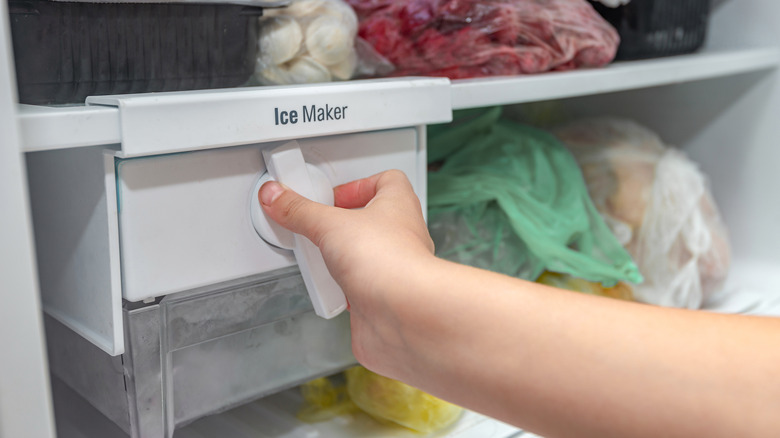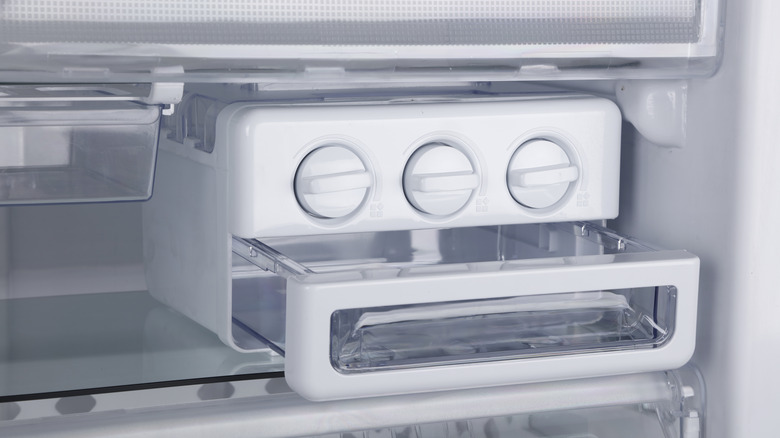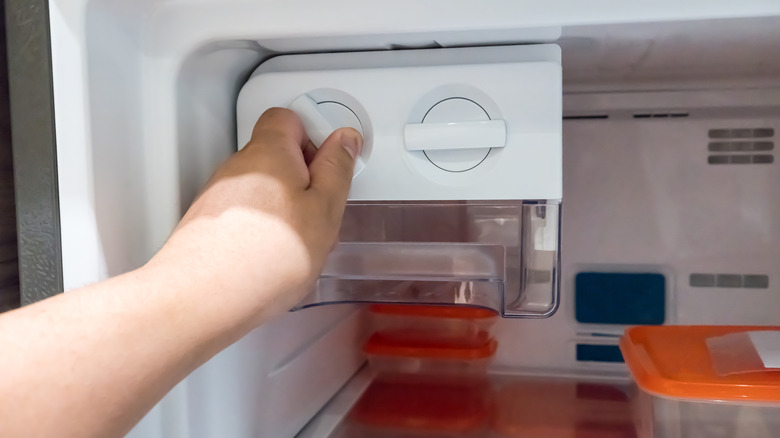The Reason Your Ice Maker Stopped Working (And How To Fix It)
If you find yourself dealing with a malfunctioning ice maker, you can typically trace it to an external problem with the water supply, a blockage, or an internal mechanical issue. For the most part, you can fix an ice maker relatively easily once you diagnose the issue. It's great news for homeowners since calling a professional to repair it can cost a pretty penny. You'll not only be charged a premium for labor, but you'll also need to pay for any parts.
While Routine cleaning is one of the best preventative measures you can take to keep your ice maker in tip-top shape, incorporating a visual inspection every so often is also a good idea, as is listening for any odd or out-of-the-blue noises, because these can alert you to potential issues on the horizon. As with all appliances, you should consult the manual before beginning any work, and if you don't feel confident in your own assessment or have been unsuccessful in trying to fix your ice machine, then it may be necessary to get a professional opinion.
It could be a pretty simple fix
If your ice maker has stopped working, you'll want to check the chute for any accidental obstructions, like bags of frozen peas or giant blocks of ice. If you find them, remove them and expect a possible mini avalanche the next time you go to fill a glass with ice. Another problem is a frozen or stuck ice maker arm. The arm is what tells your ice maker that the bin is full. If it's stuck in the OFF position, then obviously, no ice. If neither of these are the source of the problem, then it's time to check the outside of your refrigerator.
The water supply line attaches to the back of your refrigerator and is responsible for providing fresh water to the refrigerator's ice maker and water dispenser. It usually connects to the household water source by way of a flexible, temperature-resistant pipe. If the water line is kinked, or frozen, you can fix this by unkinking it or defrosting your freezer.
When in doubt, reset
Some refrigerators have a reset button that's located in the freezer compartment near the ice maker. If the above options yield no ice, then it's recommended to do a forced reset. Keep in mind that not all models have ice makers with reset buttons. If your refrigerator doesn't have one, then you'll have to reset your ice maker the old-fashioned way — by unplugging it.
First, turn the ice maker off. This is usually done via a switch or dial located inside the freezer compartment. Next, unplug your refrigerator for five minutes, which allows the system that controls the ice machine to reset. Plug it back in and flip the switch (or turn the dial) to the ON position. This manual reset should start your ice machine back up.
If your ice maker still refuses to create cubes, or if it turns on but the ice being made tastes or smells a bit funky, then it might be best to call in the professionals. If your refrigerator is under warranty, call up customer support and request a free service repair.


